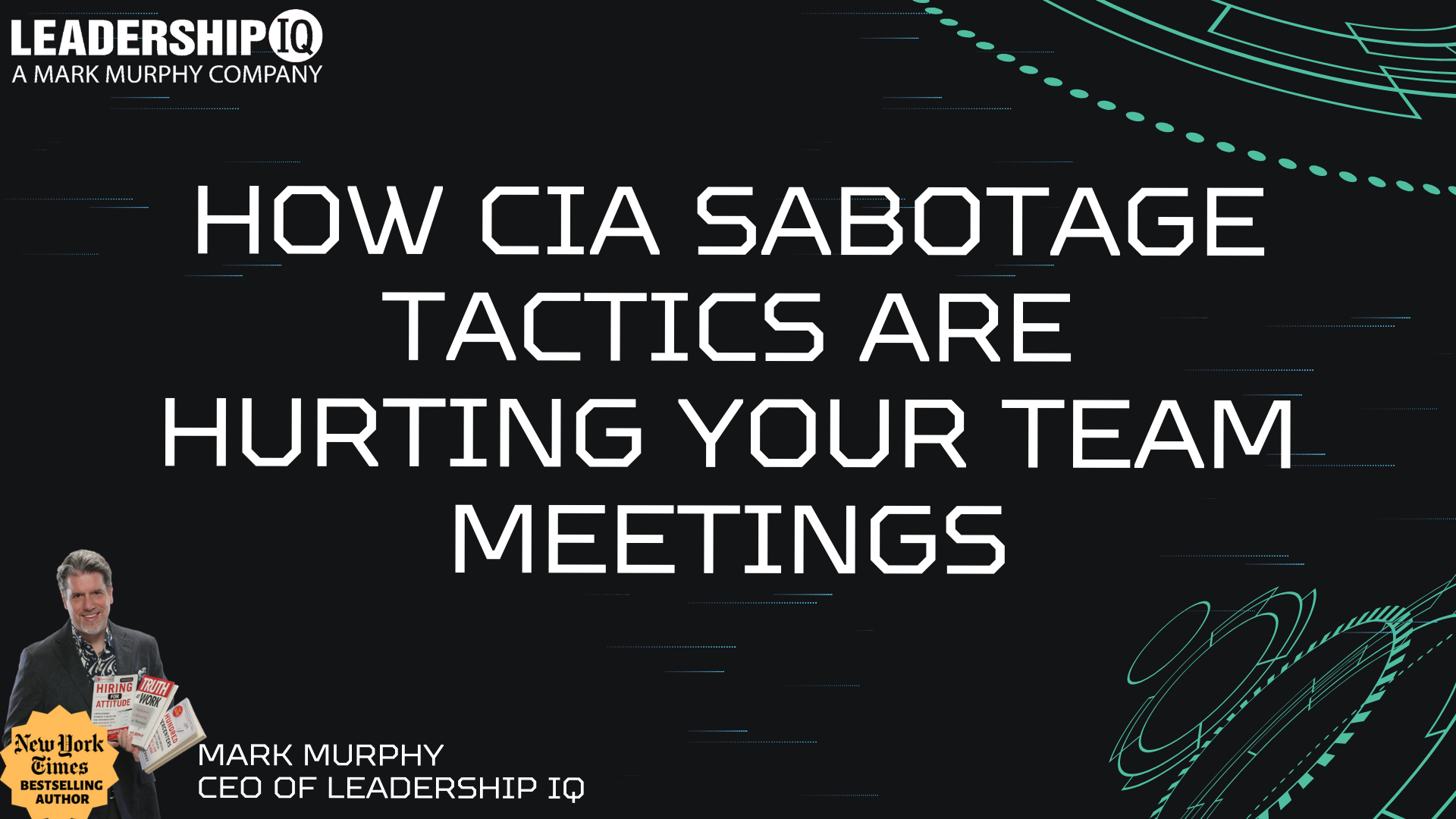
In 1944, the United States Office of Strategic Services, now the Central Intelligence Agency, published a document called the Simple Sabotage Field Manual. The guide was for use by agents to recruit potential foreign saboteurs (U.S. sympathizers) and to give those folks the means to inflict sabotage and help the Allies win the war. For instance, if a US agent found a sympathizer in Germany, maybe a random office worker, they would give them this manual and say, "Use these techniques to hurt Germany from the inside."
The guide covers a wide range of sabotage, including electric power, railways and communications. But one of the most relevant sections for us modern-day office workers covers "General Interference with Organizations and Production." Among the many techniques given, here are a few of my favorites for sabotaging meetings:
- "Refer back to matters decided upon at the last meeting and attempt to re-open the question of the advisability of that decision."
- "Insist on doing everything through ‘channels.’ Never permit shortcuts to be taken in order to expedite decisions."
- "Bring up irrelevant issues as frequently as possible."
- "Haggle over precise wordings of communications, minutes, resolutions."
Remember that this is from a manual developed by the precursor to the CIA to help foreign agents sabotage enemies of the United States during World War II. US spies would give this manual to everyday normal people and basically say, "If you can disrupt a few office meetings, you could help the US win the war." In other words, someone being a pain in a meeting is so damaging that it can actually damage an entire country.
And yet, if you've attended enough meetings in modern companies, you can see these techniques employed, consciously or unconsciously, every single day.
For example, in Leadership IQ's study, How Effective Is Your Executive Leadership Team? only 19% of top executives strongly agree that on their leadership team, when a decision is made, everyone is fully committed with no backstabbing or passive-aggressiveness. And only 14% of the top management team believes that their words can be counted on to become action.
It's not uncommon to see an executive team (or any team) revisit issues over and over, failing to conclusively resolve the matter and move forward. It's almost as though they're actively trying to implement this sabotage technique: "Refer back to matters decided upon at the last meeting and attempt to re-open the question of the advisability of that decision."
The sabotage techniques also work incredibly well to slow organizations and undermine employee morale. Take the tens of thousands of leaders and employees who have taken the online test, How Do Your Time Management Skills Stack Up? One of the questions asks respondents to choose between these statements:
- I'm frequently stuck in meetings that are not productive or an efficient use of everyone's time.
- On average, the meetings I attend are focused, productive and efficient.
Meetings have a significant impact on employee engagement. For instance, 65% of people who dislike their jobs report that they're frequently stuck in unproductive meetings. But only 24% of people who love their jobs say they're frequently in unproductive meetings. In other words, attending too many unproductive meetings could be a contributing factor to serious job dissatisfaction.
It's not a stretch to assume that the frustration of a continuous string of tedious and ineffective meetings will adversely affect an employee's overall well-being. The problem is only worsened when those inefficient meetings consume employees' time during the day, resulting in a mountain of take-home work.
Finally, it's not good for a leader's career when they can’t take action because their meetings are undermined by referring back to matters decided upon at the last meeting, frequently discussing irrelevant issues or haggling over precise wordings. The study Why CEOs Get Fired found that "too much talk and not enough action" is a major reason for CEO terminations. Many of the Board members interviewed in the study complained about CEOs who would talk endlessly about grand visions and new strategies but failed to make decisions and take action.
For anyone who runs meetings, share the meeting sabotage techniques referenced earlier. Then ask your team to what extent they feel like your team is being sabotaged with those techniques. The shock and embarrassment of realizing that the group is falling right into a saboteur's hands is often enough to quickly eliminate many of those behaviors.


Related Posts
- Leadership Styles Quiz: Which Of These Different Leadership Styles Do You Use?
- Types Of Power Quiz: Do You Use Referent Power, Reward Power, Coercive Power, Legitimate Power, Expert Power or Information Power?
- Quiz: What Motivates You?
- The State Of Leadership Development
- Why New Hires Fail (The Landmark "Hiring For Attitude" Study Updated With New Data)
- Are SMART Goals Dumb?
- Employee Engagement Is Higher For Low Performers In 42% Of Companies
- Quiz: What's Your Organizational Culture?
- Sitemap





